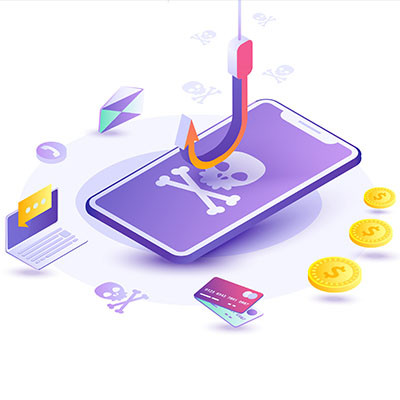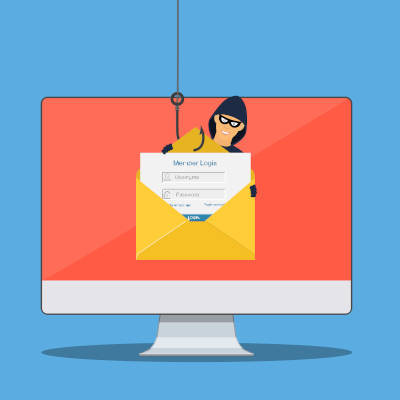Ferrum Technology Services Blog
Amazon Prime subscribers were recently sent a communication from the online marketplace detailing popular scams and what can be done to protect against them. While we have our own set of best practices to share, we thought we would take a closer look at Amazon’s advice to see how it squares up against our own.
If you are an Amazon Prime subscriber, chances are you received an email from the online marketplace warning users of scams that take advantage of offerings and brand recognition. We thought it would be interesting to look at the advice shared by this message to see if it matches up with our own recommended best practices.
Sometimes, I kind of miss the oh-too-obvious spam emails that were once the norm. You know, the kind that were supposedly from some usurped royal who needed your assistance to reclaim their rightful place on the throne, or from some absurdly attractive individual who seemed to be coming on to you. Sure, at the time it was annoying, but compared to today’s spam…
Well, it was a simpler time.
Cybersecurity has many facets, but one of the most overlooked is social media. Hackers frequently use social engineering tactics to target users through their favorite social media platforms. If you’re not observant enough, you could put your business at risk by accepting the wrong friend request or clicking the wrong link. To help you and your employees keep security high on the priority list, we have put together the following tips.
We get more email correspondence than ever. Unfortunately, many of these messages are spam. Some are even worse: Phishing attempts looking to fool you into providing information that can be used to infiltrate your business account or network. This month, we thought we would go over some of the telltale signs that you are dealing with a probable phishing attempt and how to properly manage the loads of spam you get in your inbox each day.
Hackers are always taking advantage of others’ misfortunes, and they have even gone so far as to leverage the COVID-19 pandemic in efforts to launch phishing attacks. How have hackers utilized this worldwide disaster to their benefit, and what can we do to keep our organizations secure in this troubling time? Let’s find out.
We’ve become aware of a concerning phenomenon: the perception that a business that has already been targeted by a cyberattack, won’t be attacked again. We here to tell you that this is decidedly not the case—in fact, according to cybersecurity solutions provider Crowdstrike, there’s a 68 percent chance a targeted business will see another attack within a year.
Phishing attacks are growing in number and it presents a major challenge for businesses. The many different forms that these attacks come in just exacerbates the problem. Today, we will take a brief look at phishing to help you educate your staff on what they entail and how to mitigate the massive risk that comes with them.
“Hello sir/ma’am, I am a member of royal [sic] family and I am in grave danger in my country. If you send me money to get out safely, I will share my great riches with you as reward.”
Scams like this one have become a punchline for many, which makes you wonder why they are still commonly used by cybercriminals. As it turns out, there’s a very compelling reason that they do so, one that’s been known for years.
Robocalls plague the world’s smartphone users, but have you ever stopped to ask why you receive them in the first place? Why are robocallers able to hide behind a local number so that you pick up the phone? Scammers are actually using a business tool you may have heard of… Voice over Internet Protocol, or VoIP, a modern phone solution that in the hands of anyone else is extremely helpful.
There’s one major reason why email is the preferred method of spreading threats like ransomware and other types of malicious software. The sheer number of messages that can be sent through email on its own increases the odds that a user will click on the wrong link or download the wrong attachment. How can you know the legitimacy of any message you receive in your email inbox?
Back in 1995, scammers pulled the first phishing attack. They took the identity of AOL employees and requested the billing information of users through instant messaging. More sophisticated phishing attempts have evolved over the years, culminating in the commonly-seen email phishing attack, which tricks users into handing over personal or sensitive information. Phishing attacks can be seen through, so we’ll show you how you can identify threats before they become a problem.
 Email is a communication solution that clearly shows its age, but it’s still a vital component of the modern office. Despite your best efforts to find a better way to communicate, email is a staple that’s proving to be difficult, if not impossible, to adequately replace. Therefore, it makes the most sense to make using email as painless as possible. Here’s how it’s done.
Email is a communication solution that clearly shows its age, but it’s still a vital component of the modern office. Despite your best efforts to find a better way to communicate, email is a staple that’s proving to be difficult, if not impossible, to adequately replace. Therefore, it makes the most sense to make using email as painless as possible. Here’s how it’s done.
 Spam in your email inbox is extremely annoying. Email spam is always an eyesore, and swallows up valuable time wasted on sifting through your inbox. Have you ever wondered how email spam got its name? You may be surprised to find the answer. Here's a hint: it has something to do with Vikings, a diner, canned meat, and a British comedy.
Spam in your email inbox is extremely annoying. Email spam is always an eyesore, and swallows up valuable time wasted on sifting through your inbox. Have you ever wondered how email spam got its name? You may be surprised to find the answer. Here's a hint: it has something to do with Vikings, a diner, canned meat, and a British comedy.














